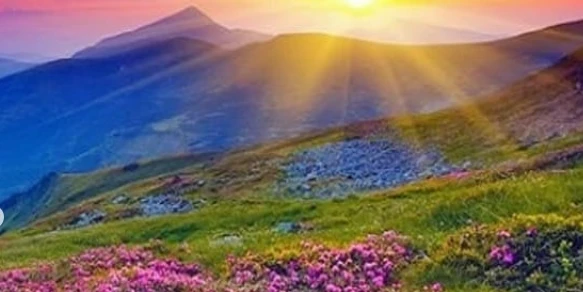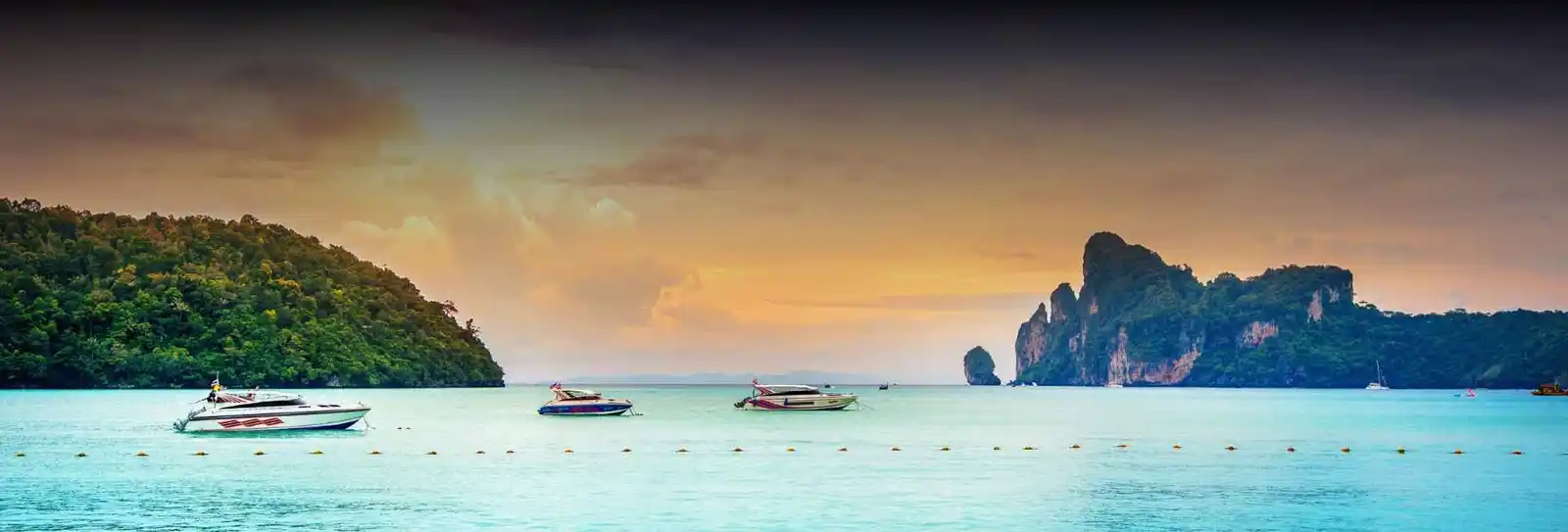
India's most lovely natural jewel is the Valley of Flowers National Park, in the remotest area of the Western Himalayas in the state. The beautiful alpine meadow, a World Heritage site as classified under UNESCO, is famous for its emerald green grasslands against the kaleidoscopic patchwork of wildflowers in bloom against the exceedingly beautiful backdrop of snow-white mountains. Located at approximately 12,000 feet above sea level, the Valley of Flowers is a paradise for nature enthusiasts, botanists, trekkers, and photographers. Between June and September each year, the valley comes alive with colours as more than 500 indigenous plant species bloom in all their hues. Rhododendron, blue poppy, primulas, and marigold paint the landscape with a kaleidoscope of colours. The valley also has some threatened and endangered species like Himalayan blue sheep (bharal), snow leopard, Asiatic black bear, and mixed bird and butterfly species, thus a hotspot of biodiversity.One arrives at the valley through a quite challenging 17 km trek from the village level at the bottom of the valley, Govindghat, to Ghangaria. The trek is beautiful with waterfalls, dense forest, foamy water brooks and gives adventure enthusiasts and peaceful believers alike their adrenaline kick and serene experience. Ghangaria is the final human settlement on the route and source for the Hemkund Sahib trek, also being a religious scenic route itself. Besides its awe-inspiring natural beauty, the Valley of Flowers is gigantic culturally and religiously too. Humans have always imagined the valley to have fairies inside it, and its dreaminess has never been a dream such as this. It has again and again been a religious pilgrimage site for centuries, more often related to legend in Hindu mythology, too. For whatever reason – the siren call of adventure, religious refuge, or the majesty of nature – the Valley of Flowers has something to be remembered. It is an area where the air is fresher, the colours brighter, and with every step you are driven further into nature's gentle magic. Perfect spot for a monsoon trek, this flower park is as much a destination as an experience, which will mesmerise your imagination until eternity through one of India's lesser-promoted ecological marvels.History of the Valley of FlowersUttarakhand's Valley of Flowers is as scientifically and historically, as mythologically, rich as it is mythologically. Centuries and miles away from world awareness of tourism at a time, when natives and pilgrims were sure that the valley was sacred to both of them, and the land of gods and fairies, its unapproachability and its occasional barrenness excluded it for centuries from foreign visitors, and it remained an unspotted world of virgin beauty and romance. Its past was rewritten in 1931 when British plant hunter and mountaineer Frank S. Smythe stumbled upon the valley. Having returned from a successful trekking tour to ascend Mount Kamet, Smythe and his friends were resting at the entrance to this secret paradise. Lured by its divine beauty and thick cover of vegetation, Smythe wrote an article on it later in the book "The Valley of Flowers," bringing the area into the global spotlight. He collected a few specimens of the plant species, unknown to Western science.The Indian scientists and local shepherds were familiar with the area's abundance before Smythe entered the area. In reality, the valley had even earlier been spiritually and culturally favoured. The mythological herb Sanjeevani used to be located by Hanuman, the monkey god of Ramayana, from the very same valley so that Lakshmana would be brought back from death in the war with Ravana. All such mythological importance merely enhanced the religious value of the valley for Hindu fanatics. It was formally announced in 1980 by the Indian government as a botanical and ecological region of national park importance. Just three years after that, it was a World Heritage Site with UNESCO under the Nanda Devi Biosphere Reserve in 2005. It was hoped that these designations would save the valley from being devastated by the environment and mass tourism, thus maintaining its everyday biodiversity. Today, the Valley of Flowers is a testament to the success of conservation, religious zeal, and physical splendour. Students, mountaineers, and faith pilgrims all around the world still make their way to it, attracted by its blend of ecological and mythological significance. It is one of the few truly rare places where science and folklore, and pristine nature converge.👉 Looking for a thrilling Himalayan trek from Bangalore? Don’t miss the chance to experience the Valley of Flowers Trek with Escape2Explore. This guided adventure offers scenic trails, an ancient fort, and breathtaking sunrise views — perfect for weekend getaways and nature lovers.By Places Nearby: Valley of FlowersHemkund Sahib: Approximately 6 km from Ghangaria is the world's highest Gurudwara, Hemkund Sahib, at an altitude of 4,329 meters (14,200 ft). With a glacial lake that sparkles, among seven snow-capped peaks, this peaceful pilgrim site is on the journey of the tenth Sikh Guru, Guru Gobind Singh. The Hemkund trek, though tough, is spiritually enriching and well worth the trouble, with beautiful scenery along the way. Visitors and pilgrims such as experience taking the Valley of Flowers trek and Hemkunt Sahib tour at Guptakashi to experience the fusion of nature and divine peace.Ghangaria: Ghangaria is the last human settlement before approaching the Valley of Flowers and Hemkund Sahib. Ghangaria is a base camp for pilgrims and trekkers and a staging village with lodging, a restaurant, and basic medical services. Ghangaria is at 3,050 meters above sea level and amidst forests and streams, and a picturesque halt and acclimatisation place before the trek.Joshimath: A major base for much of the Himalayan trekking experience, Joshimath is a town some 20 km from Govindghat, the Valley of Flowers trekking origin. Pilgrim town and tourist resort accessible by Auli, Badrinath, and Nanda Devi National Park, Joshimath boasts ancient monasteries and temples as well as the Adi Shankaracharya Math, thereby adding religious importance to its natural environment.Auli: Renowned for its snow-white slopes and Himalayan panorama of the peak, Auli is a world-class skiing resort within an hour's drive of Joshimath. In summer, it is green and walker alpine meadow, a cable car ride, and a serene retreat ringed by mountains. Auli is an ideal retreat after the weary trek in the Valley of Flowers.Badrinath: Badrinath Temple is a Char Dham temple, which is 40 km from Govindghat. The Alaknanda River shrine town boasts the sacred temple of Lord Vishnu, Badrinath Temple. Its religious environment, hot springs, and spectacular mountain views draw tourists to this destination to view it.Best Time to Visit the Valley of FlowersMid-July to Early September: Ideal time to visit Valley of Flowers in all its splendor when monsoon rains bring life to the valley is mid-July to early September. Snowmelt period, and countryside lands are awash with colours as wildflowers burst into bloom at each turn and twist of the countryside.How to Reach the Valley of Flowers, UttarakhandBy Train: Nearest Railway Station: Rishikesh (about 270 km from Govindghat). Well connected by road to major cities such as Delhi, Haridwar, and Dehradun. Then the trekker has to travel a longer distance by road to Govindghat.By Airport: Nearest Airport: Jolly Grant Airport, Dehradun (approximately 295 km from Govindghat). Flights from Delhi and other major Indian cities regularly. Taxi or a bus from the airport to Govindghat.Why Book with escape2exploreWhen exploring the Valley of Flowers Trek from Bengaluru and beyond, escape2explore stands out as a trusted name in adventure and experiential travel. Here’s why hundreds of travellers choose us for their getaways:Trusted, Well-Reviewed Local Operator: escape2explore has gained the trust of thousands of content tourists all over India. With persistent positive feedback and an unblemished reputation for delivering quality experiences, we assure you that your experience will be hassle-free, memorable, and value-packed. Our insider local knowledge guarantees that you will always be in safe hands.Seasoned Guides: Our trips are led by friendly, trained, and professional guides who are passionate about the outdoors and your safety. Whether it's a beach trek, a cultural tour, or a spiritual walk through temples, our team knows the terrain, the stories, and how to make each moment count.Safe & Curated Itineraries: Your safety is our number one priority. Our tour packages are thoughtfully crafted with safety measures, researched accommodations, and easy travel arrangements. We take care of the details so you can have the experience hassle-free and worry-free.Unique Experience That You Won't Find Anywhere Else: With escape2explore, you discover more than the tourist attractions. We go off the beaten track with hidden beaches, unusual treks, offbeat cultural destinations, and true interactions.Read: Ooty|Skandagiri Hill|Weekend Getaway|Easy Treks Near Bangalore|Devarayanadurga


